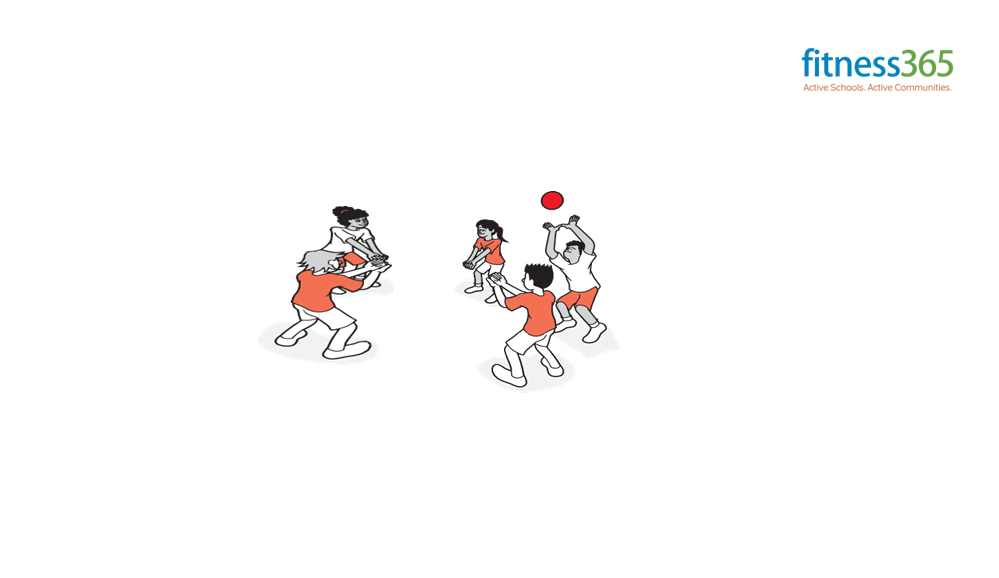
by Neetu | Jun 2, 2020 | Fitness Activity
Movement skills/concepts
Striking a ball in the air (volley, serve, bump), body awareness, and judging flight path.
Set-up
- Lightweight balls.
- Teams of five–six, with one ball per group, spread out in circle formation in a hard court area.
Activity
Each team tries to keep its ball in the air by volleying it from player to player. The ball may be hit to any player in the circle. The winners are the team that makes the highest number of volleys in a row without the ball bouncing. Players may use any kind of volley: underarm strike, bump, or overhead volley.
- communication among team members
- moving feet to get into position
- hitting the ball with flat surface upward
- following through
Variations
Simplify the game: Allow one bounce between each hit. Place a player in the middle.
Extend skills: Allow only one kind of pass.
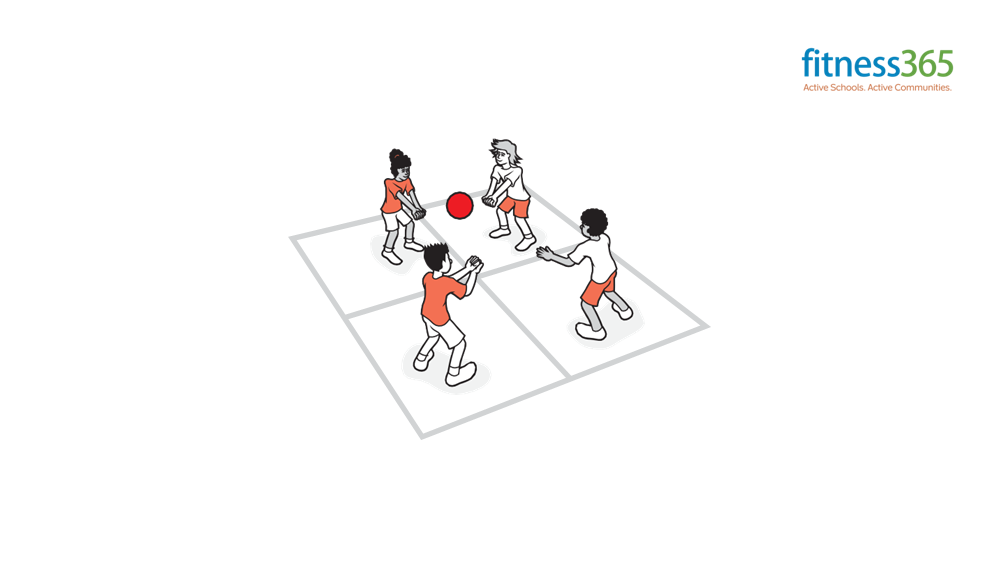
by Neetu | Jun 2, 2020 | Fitness Activity
Movement skills/concepts
Underhand strike (serve), two-handed forearm pass (bump), judging speed and direction, and moving into position to play the ball.
Set-up
- Lightweight balls that will bounce.
- Hardcourt area marked out in squares (2 meters wide approximately): some sets of four squares and some sets of two squares.
- Groups of either two or four, each group with a ball: a player stands in each square.
Activity
Children play Four Square or Two Square.
One player starts the game by serving the ball underhand after one bounce and, for Four Square, hitting it to any player in the other three squares or, for Two Square, hitting it to the other player. The player receiving the ball must keep it in play by striking the ball with an underhand strike (bump) to any square on the full.
Play continues until a mistake is made, such as where a player is not able to return the ball, hits the ball by sidearm or overarm, or catches the ball and steps into a square occupied by another player.
After each rally, rotate positions and change the server.
Play the game:
- cooperatively, by counting the number of volleys made by your group before a mistake
- competitively, by hitting the ball to others in your group (Four Square) so that it makes it hard for them to return the ball
Variations
Develop game: Children modify the game to include scoring and rules.
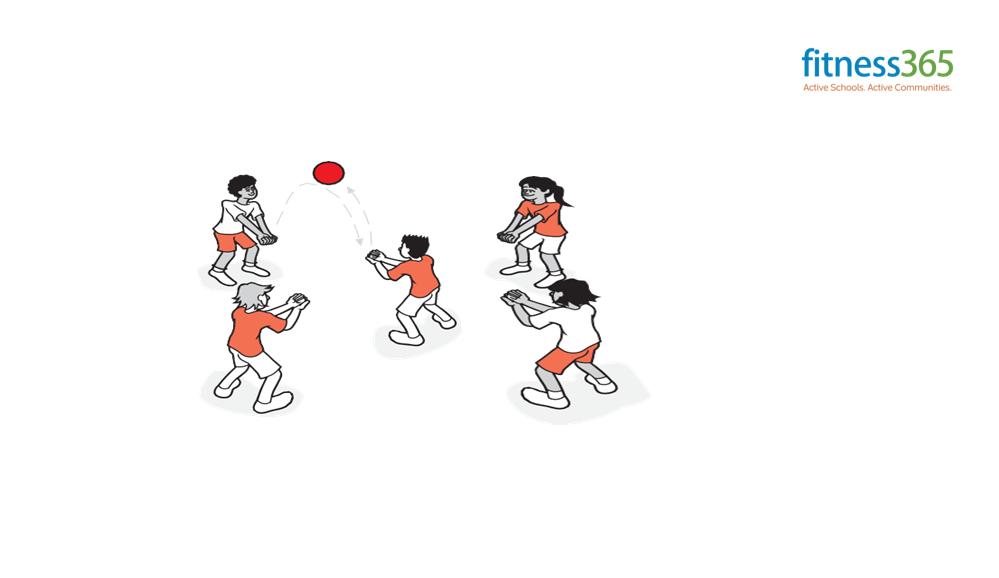
by Neetu | Jun 2, 2020 | Fitness Activity
Movement skills/concepts
Volleying ball to a stationary target, moving into space, changing direction and speed.
Set-up
- Lightweight balls.
- Groups of four–five, with one ball per group, are spread out in a circle in a grass or hard surface area, with about 2 meters between each child. One child stands in the center of the circle and has the ball.
Activity
The child in the middle throws a high lob to one child in the circle, who volleys it back to the first child. This is repeated until each child has had a turn. The child in the middle is replaced by another child.
- moving the body under the ball
- fingers spread – contact with pads of fingers
- bending and extending – bending knees to receive, and extending legs and arms upward on contact
- following through
Variations
Pass around the circle: The first child in the circle throws the ball to the child on their left, who then volleys it in the air and catches it before throwing it to the next child on their left.
Increase challenge: Players try to volley around the circle without catching the ball.
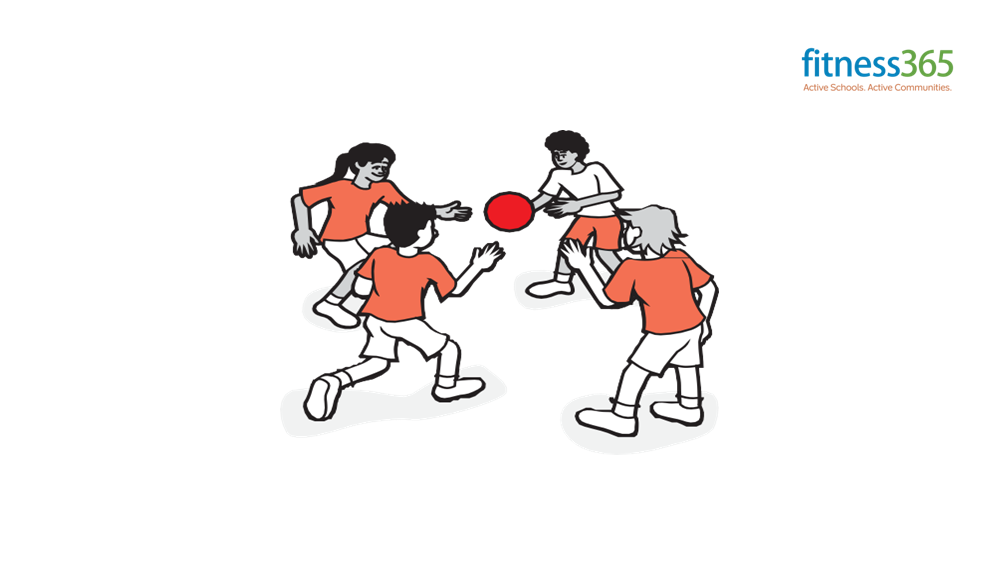
by Neetu | Jun 2, 2020 | Fitness Activity
Movement skills/concepts
Dribbling a ball with the hands, throwing or passing, space, and body awareness.
Set-up
- Large balls.
- Groups of four (three dribblers and a burglar), with one ball per group, in a defined grass or hard surface area.
Activity
The three dribblers dribble and pass the ball to see how long they can keep it away from the burglar, who tries to steal it. If the ball is stolen, the person who lost the ball becomes the new burglar. Nobody contact is allowed.
- head up looking around
- low dribbling – ball no higher than waist height
- relaxed fingertips control the dribble
Variations
- Modify rules: Play two on two, or three on three.
- Vary the size of the area: Decrease or enlarge the area.
Add goals: Place several markers about 1 meter apart as gates. See how many gates the dribblers can get through in a set time.
Vary skill and equipment: Use soccer or hockey dribbling skills.
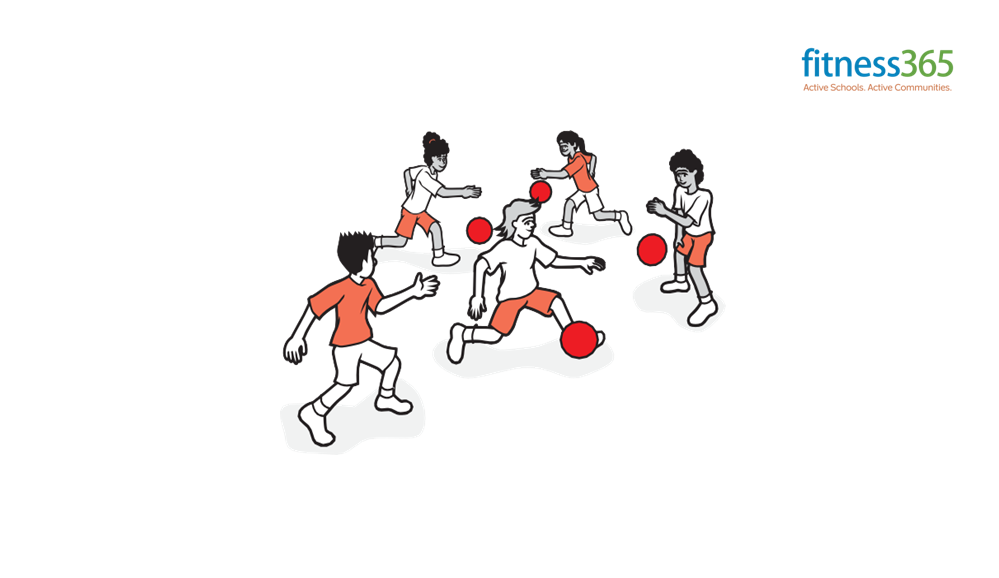
by Neetu | Jun 2, 2020 | Fitness Activity
Movement skills/concepts
Dribbling a ball with hands stationary or moving, space awareness, and evading a tagger.
Set-up
- Large round bouncy balls.
- Children are spread out in a defined grass or hard surface area with a safe line. All children have a ball except one child, who is the tyrannosaurus.
Activity
Children, move around the area, dribbling the ball for as long as possible. If a child loses control of the ball, they call, ‘Tyrannosaurus’. All then run holding their ball and trying to cross the safety line before being tagged by the tyrannosaurus. Choose a new tyrannosaurus and the game continues.
- relaxed dribbling
- head up looking around
- not touching others
Variations
Vary action of tyrannosaurus: The tyrannosaurus tries to steal the ball from dribblers while they are dribbling.
Vary action of dribblers: On the call of ‘Tyrannosaurus’, dribblers continue to dribble the ball while evading the tyrannosaurus.
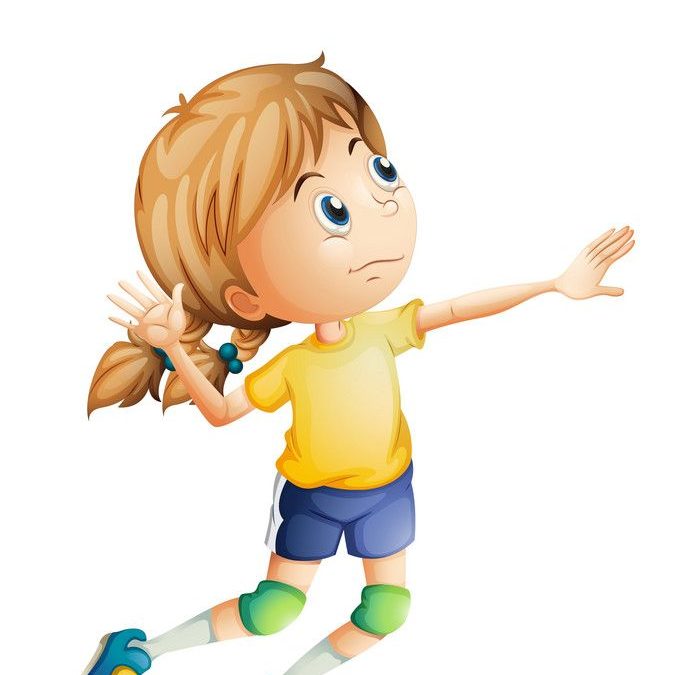
by Neetu | Jun 2, 2020 | Fitness Activity
Movement skills/concepts
Overhead volleying, space, and body awareness.
Set-up
- Lightweight balls (balloons/foam balls/volleyballs).
- Children, each with a lightweight ball, are spread out in a defined grass or hard area.
Activity
- toss the ball up in the air and, using the pads of your fingers, volley the ball upward above your head so that the ball returns directly to you, then catch the ball after each volley
- repeat and see if you can volley the ball upward twice in the air and then catch the ball; try volleying three times and catch, then gradually increase the number of times you volley the ball in the air and catch it – how many times can you volley the ball before it touches the ground?
- stand facing a wall, toss the ball above your head and volley it upward to the wall using both hands, then catch it after it rebounds from the wall; repeat, this time with two volleys in a row and catch, then gradually increase the number of times you volley in a row before you catch it
- with a partner standing one meter away, pass the ball back and forth with the overhead volley pattern – each person gets two strikes on each side
- still with your partner, see if you can keep the ball going with only one strike on each side
Variations
Introduce a net: Children toss a ball up and volley over a net to a partner on the other side, who catches it. The partner repeats the sequence. Children gradually build up to volleying the ball back and forth over the net as many times as possible without making a mistake.













